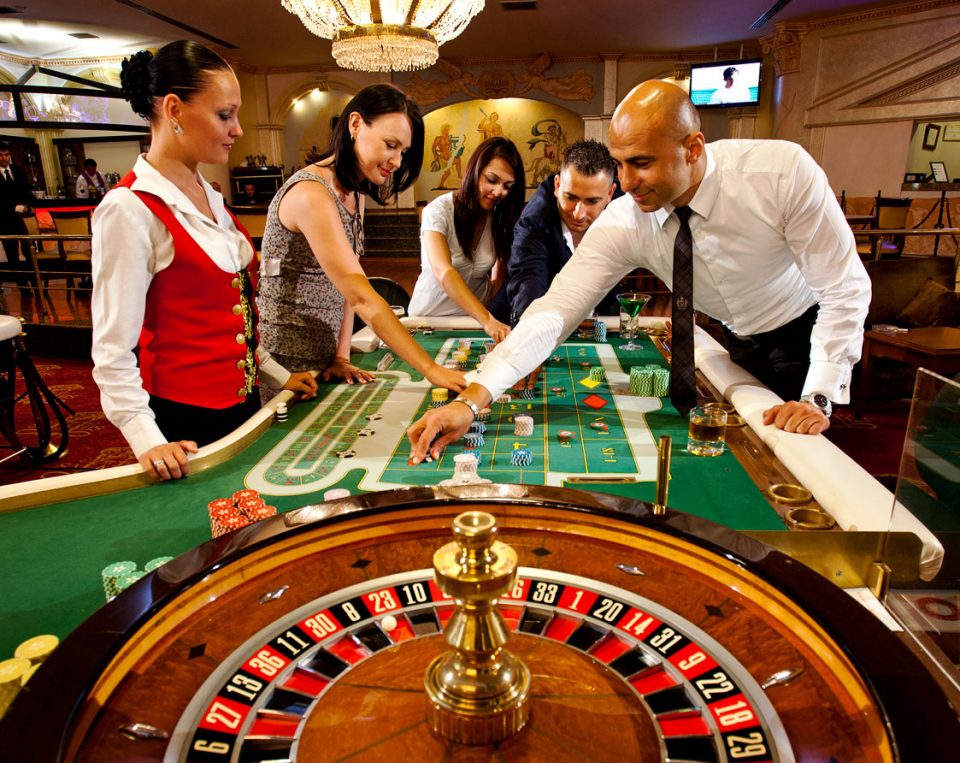The fascinating Psychological principles Behind Gambling Game Design

Casino games have long captivated people’s attention, drawing gamblers into a realm filled with fortune, planning, and the allure of excitement. Each activity is meticulously crafted not just for entertainment, but also to elicit targeted emotional responses that keep gamblers engaged and interested. Understanding the motivations behind these designs reveals much about how human psychology plays a key role in the gaming experience.
From the vivid lights and vibrant sounds to the sophisticated layering of guidelines and rewards, casino games are designed to create an atmosphere of thrill and expectation. Game designers leverage psychological principles to influence gambler behavior, whether through the use of big prizes, near-miss scenarios, or community engagement. By examining these elements, we can better appreciate how casino games fulfill not just a need for entertainment, but underlying psychological needs for adventure and risk.
Grasping Player Behavior
Casino games are engineered with a deep understanding of gamer psychology, which is crucial for drawing in and keeping players. The thrill of the game, alongside the hope of winning, creates a powerful draw. Game designers employ elements like audio cues, vibrant graphics, and captivating gameplay to seize attention and generate emotional responses. These sensory experiences enhance the overall experience, making players feel more involved in the game.
Another notable aspect of player behavior is the notion of risk and reward. Casino games often manage high-stakes situations with the potential for significant rewards, which can lead to the phenomenon known as near-miss experience. When players come near to winning, the brain produces dopamine, reinforcing their behavior and motivating them to persist playing in search of that fleeting win. This cycle of hope and frustration plays a key role in how games are constructed and promoted.
Lastly, social elements also play a critical role in player behavior at casinos. Many games are designed to be played in pairs or with other players, fostering a sense of community and collective experience. The interaction inherent in games like baccarat enhances enjoyment and can lead to prolonged gaming periods. Designers capitalize on this by creating environments that prompt players to remain, socialize, and revisit, making the overall casino experience more appealing.
The Role of Imagery and Audio
Visuals and audio play a significant role in improving the player’s experience within gambling games. Designers utilize bright colors, striking graphics, and captivating animations to grab players’ attention and hold their interest. The use of motifs, such as exploration or opulence, helps create an enthralling atmosphere that takes players into a different world. By connecting to the senses, these elements add to a intensified emotional response, prompting players to interact more deeply with the games.
Sound design is equally important in enhancing the experience of gambling games. The combination of background music, sound effects for winning combinations, and environmental noises creates an sound landscape that keeps players fascinated. Sounds associated with victories, such as chiming bells or celebratory music, evoke feelings of thrill and satisfaction, encouraging players to continue playing. These audio cues are strategically placed to amplify the excitement of the game and create a more immersive experience.
Additionally, the alignment of visuals and audio is essential for reinforcing the game’s overall concept and atmosphere. casino en ligne fiable Each element should coordinate harmoniously to create a cohesive experience that draws players in. The effective use of this synergy not only enhances user enjoyment but also increases the chances of return play, as players become more invested in the immersive world that the casino games offer. This thoughtful integration of visuals and audio ultimately enhances player involvement and loyalty.
Reward Structures and Participation
The creation of gambling experiences greatly depends on incentive structures to keep participants involved and coming back for more. These structures are based in psychological principles that exploit human nature and motivation. Participants are often motivated by the thrill of winning, which is reinforced by instant feedback through the game structure’s mechanics. This prompt satisfaction not just improves the overall experience but also cultivates a feeling of success, prompting participants to continue playing in hopes of greater rewards.
Casinos implement various reward structures, such as large payouts, bonuses, and increased rewards, to engage participants. These features create a layer of thrill that sustains interest. Additionally, the unpredictability of outcomes plays a crucial role in sustaining interest. The intermittent reinforcement schedule, where successes are random but occur often enough, maintains participants on edge and motivated to continue participating. This cycle of anticipation and anticipation is foundational to the success of gambling experiences.
Furthermore, community aspects, such as competitive events and multiplayer features, enhance the participation factor by leveraging the competitive nature of players. The shared experience of gaming with fellow participants can amplify the thrill of winning and create a community atmosphere within the gaming space. By integrating these social dynamics with effective incentive structures, casino games don’t just offer entertainment but also foster a stronger connection among players, solidifying their loyalty to the overall experience.